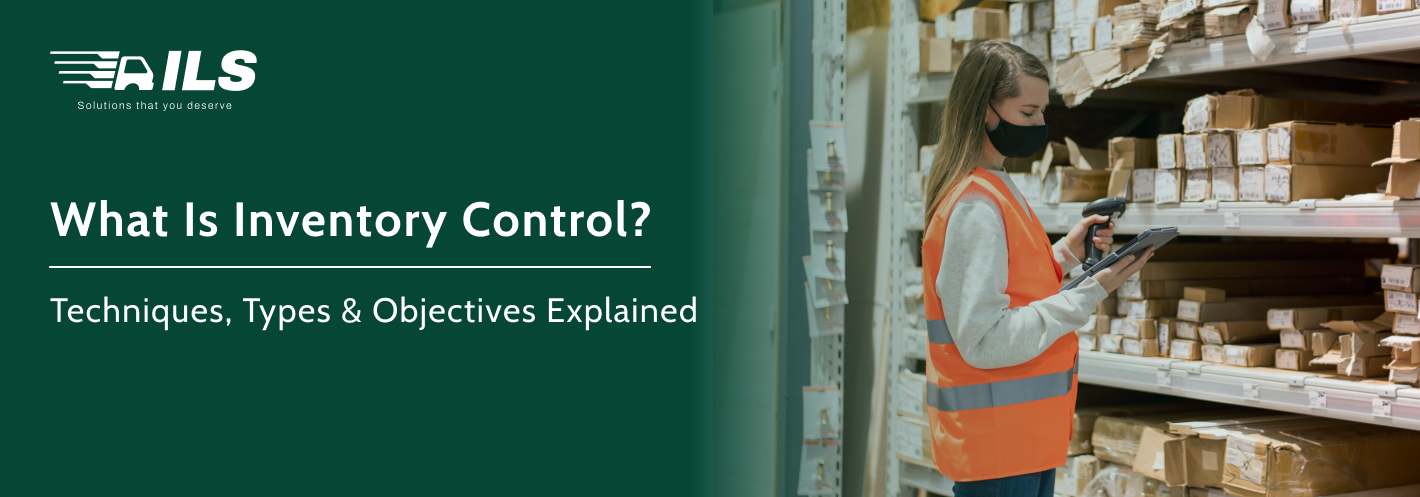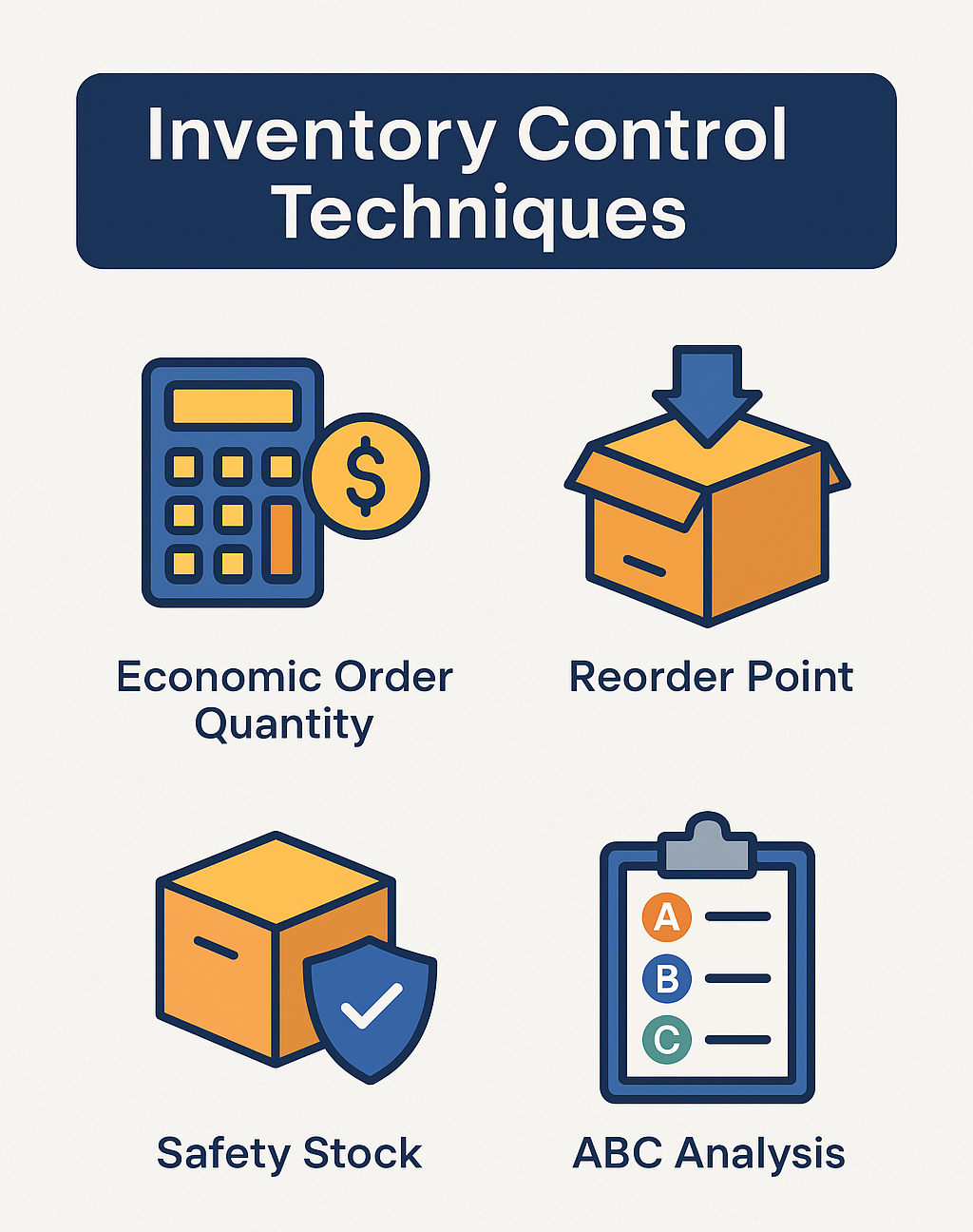What Is Inventory Control? Techniques, Types & Objectives Explained
Inventory Management
In today's competitive business environment, proper inventory control is not just necessary, it's a strategic advantage. Effective inventory control can help reduce costs, improve cash flow, and enhance customer satisfaction, whether running an eCommerce store, managing a warehouse, or overseeing retail operations. But what is inventory control, and why is it essential for your business?
This comprehensive guide will explore the objectives of inventory control, its different types, proven inventory control techniques, and how modern inventory management tools can transform your operations.
Read: Objectives of Inventory Management
What Is Inventory Control?
Inventory control refers to managing a company's inventory most efficiently and cost-effectively. This includes monitoring stock levels, tracking inventory movement, and ensuring that there is just enough inventory on hand to meet customer demand without overstocking or understocking.
In simple terms, inventory control is all about having the right products, in the correct quantity, at the right time.
Inventory control differs slightly from inventory management. While inventory management covers ordering, storing, and selling inventory, inventory control specifically focuses on regulating stock levels and ensuring accuracy.
Example: An online clothing retailer uses an inventory control system to monitor real-time stock levels, preventing overselling popular items and avoiding deadstock for seasonal wear.
Objectives of Inventory Control
The core objectives of inventory control include:
| Objective | Description |
|---|---|
| Reduce Holding Costs | Minimize costs associated with storage, insurance, and depreciation. |
| Prevent Stockouts & Overstocking | Maintain optimal inventory levels to meet demand without excess stock. |
| Improve Cash Flow | Reduce money tied up in inventory, freeing it for other business needs. |
| Enhance Customer Satisfaction | Ensure timely order fulfillment by maintaining accurate stock levels. |
| Optimize Inventory Turnover Ratio | Increase the frequency at which inventory is sold and replaced. |
| Accurate Reporting and Forecasting | Provide reliable data for business insights and demand forecasting. |
By meeting these objectives of inventory control, businesses can stay agile and responsive to market trends while minimizing waste.
Types of Inventory Control
Understanding the types of inventory control helps you choose the right strategy for your business model. The main types include:
1. Perpetual Inventory Control
This system continuously updates inventory levels in real-time using barcodes, POS systems, and inventory management tools. It's ideal for eCommerce and retail businesses.
For example, Amazon uses a perpetual system to track millions of items across global warehouses.
2. Periodic Inventory Control
Here, inventory levels are checked regularly (e.g., monthly or quarterly). It's less accurate than perpetual systems but cost-effective for small businesses.
3. Manual Inventory Control
Small businesses use this method of manually tracking stock via spreadsheets or handwritten logs. It's labour-intensive and prone to errors.
4. Just-In-Time (JIT)
JIT involves keeping minimal inventory and ordering stock only when needed. It reduces storage costs but requires strong supplier relationships and accurate demand forecasting.
5. ABC Analysis
This technique categorizes inventory based on value and importance:
- A items – High value, low quantity
- B items – Moderate value and quantity
- C items – Low value, high quantity
Each type of inventory control caters to different business sizes and industries. Choosing the right one improves efficiency and reduces waste.
Inventory Control Techniques
Implementing effective inventory control techniques is key to a smooth supply chain. Here are some proven strategies:

1. Economic Order Quantity (EOQ)
This formula helps determine the optimal quantity to minimize ordering and holding costs.
2. Reorder Point Formula
Set a trigger level that prompts reordering to avoid stockouts.
3. Safety Stock
Maintain extra stock as a buffer to meet unexpected demand.
4. Barcode/RFID Scanning
Automate inventory tracking for real-time updates and accuracy.
5. Cycle Counting
Instead of annual counts, conduct regular partial inventory counts to maintain accuracy without disrupting operations.
By applying these inventory control techniques, businesses can maintain optimal stock levels, minimise waste, and maximise profitability.
Why Inventory Control Matters
Many companies fail to recognize the impact of poor inventory control on their bottom line. Here's why it's so critical:
- Customer Trust: Accurate stock levels mean fewer cancelled orders and happier customers.
- Cost Savings: Avoid deadstock and reduce storage fees.
- Efficiency: Streamlined operations reduce errors and manual labour.
These benefits compound over time when combined with an innovative inventory control system.
Inventory Control System: Your Smart Assistant
A modern inventory control system automates stock tracking, integrates with sales channels, and offers analytics. It's especially valuable for businesses scaling operations across platforms like Shopify, Amazon, and WooCommerce.
Key Features to Look For:
- Real-time stock updates
- Low stock alerts
- Sales channel integration
- Demand forecasting
- Reporting dashboards
Popular inventory management solutions like Zoho Inventory, QuickBooks Commerce, and NetSuite provide tailored systems for small to enterprise-level businesses.
Fun Fact: Companies using automated inventory control systems report a 25–30% reduction in carrying costs.
Inventory Management Tools That Work
Incorporating the proper inventory management tools can make a world of difference. Tools can range from simple apps for solopreneurs to enterprise solutions with AI and automation.
Recommended Tools:
- Shopify Inventory App (for Shopify stores)
- TradeGecko (QuickBooks Commerce)
- Zoho Inventory
- Fishbowl Inventory
- Cin7
These tools streamline inventory and offer seamless integration with your existing systems, whether you manage warehouses, retail stores, or online shops.
Inventory and Inventory Control: How They Connect
Understanding the relationship between inventory and inventory control is crucial. Inventory refers to the goods your business holds for sale or use, while inventory control is the system you use to manage those goods effectively.
Together, they form the foundation of a well-functioning supply chain. Without proper inventory control, even well-stocked businesses can face losses due to shrinkage, spoilage, or inefficiencies.
Read: What is AWB Number and Tracking
Final Thoughts
To recap, inventory control is more than just counting stock, it's about strategically managing resources to meet customer demand, reduce costs, and boost profits. By understanding what inventory control is, its objectives, types, and techniques, you can position your business for long-term success.
With the proper inventory control techniques, reliable inventory control systems, and the best inventory management tools, your business can confidently operate efficiently and scale. Supercharge your fulfilment with ILS Portal now, contact our team.

